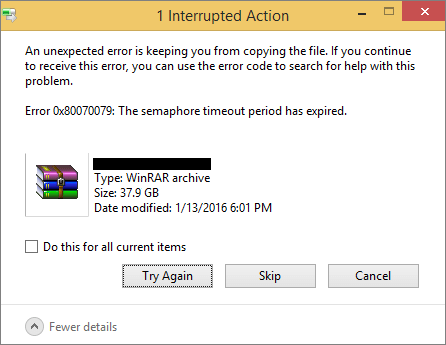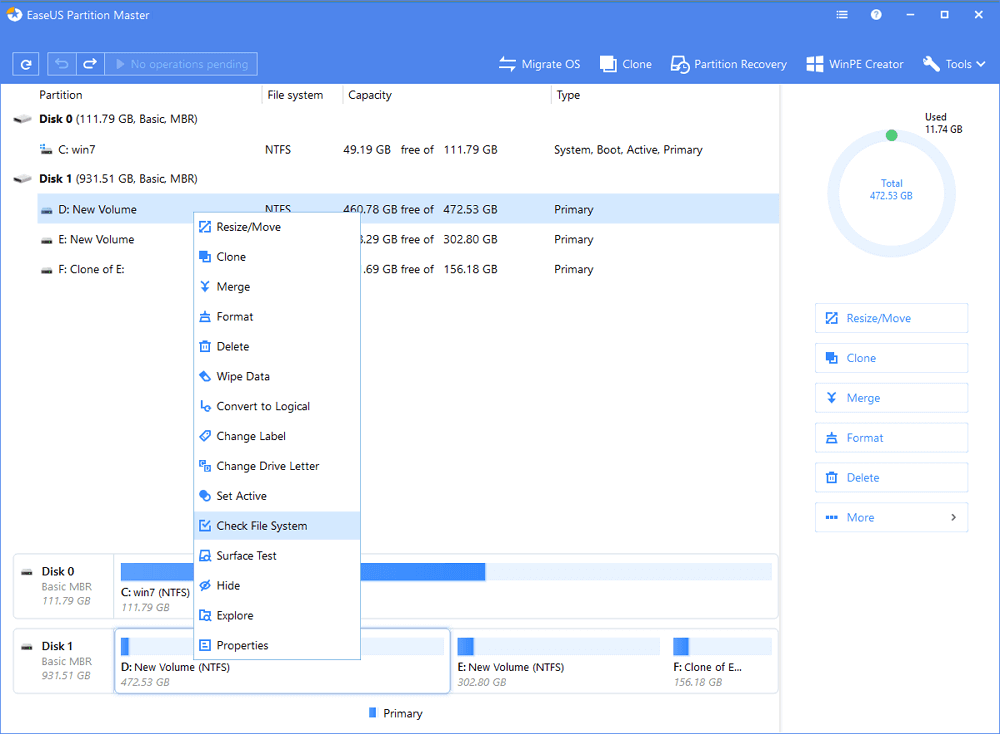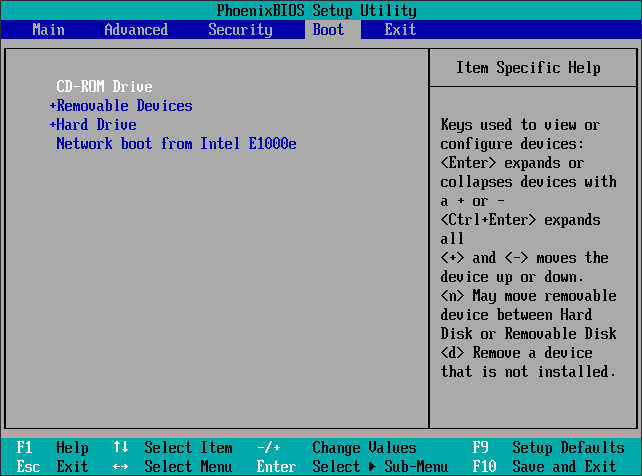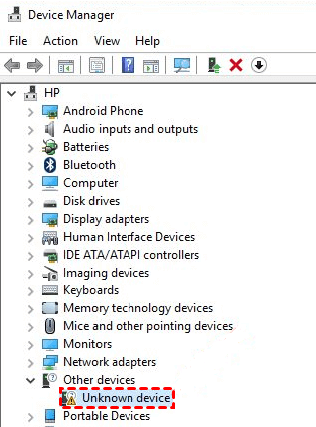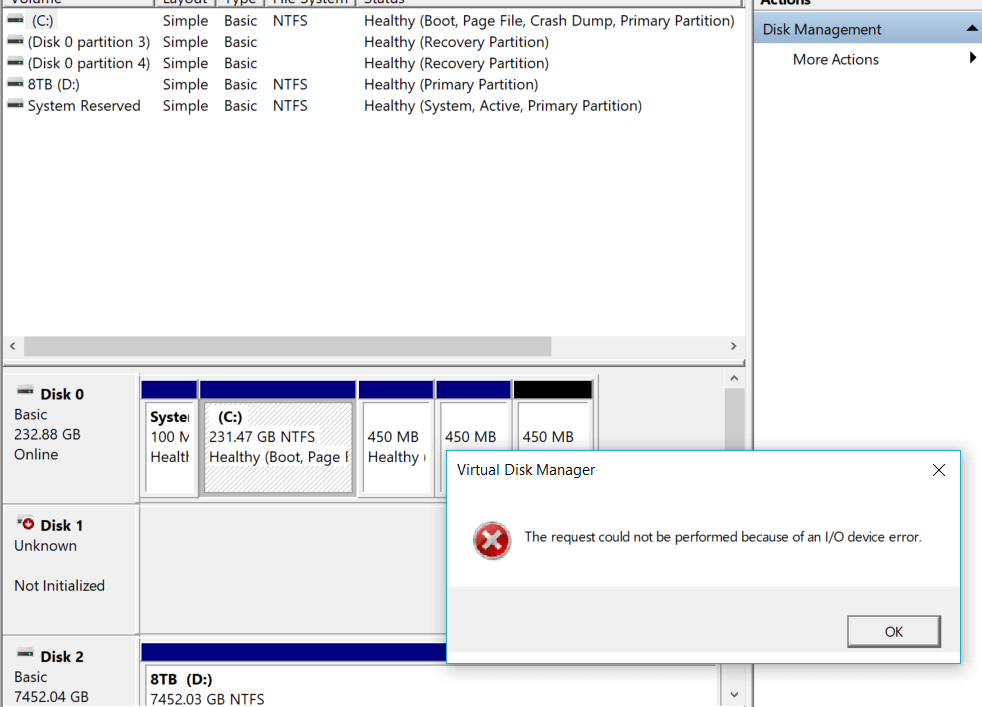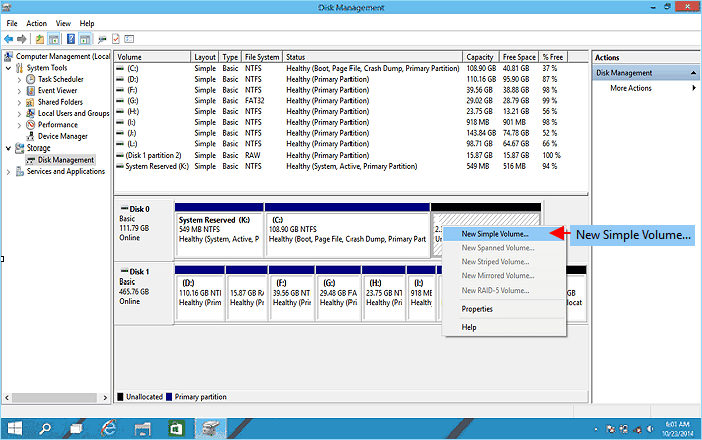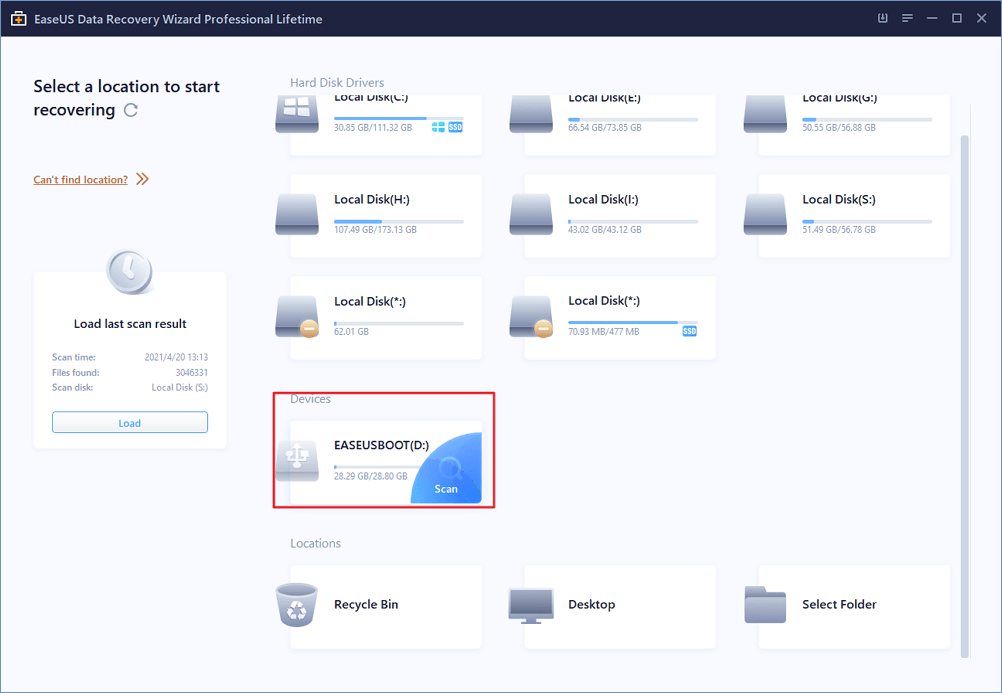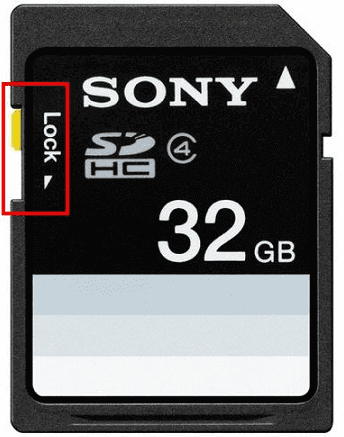-
![]() How to Fix 'The semaphore timeout period has expired'
How to Fix 'The semaphore timeout period has expired' December 12,2025
December 12,2025 6 min read
6 min read -
![]() How to Repair Not Working SanDisk Memory Card without Losing Data | NEW
How to Repair Not Working SanDisk Memory Card without Losing Data | NEW December 12,2025
December 12,2025 6 min read
6 min read -
![]() 10 Ways to Fix Non System Disk or Disk Error on Laptops/PC
10 Ways to Fix Non System Disk or Disk Error on Laptops/PC December 12,2025
December 12,2025 6 min read
6 min read -
![]() Fix HDD/SSD Unknown Device in Device Manager in 2025
Fix HDD/SSD Unknown Device in Device Manager in 2025 December 12,2025
December 12,2025 6 min read
6 min read -
![]() How to Recover Data from Huawei MateBook [X/E/D Series]
How to Recover Data from Huawei MateBook [X/E/D Series] December 12,2025
December 12,2025 6 min read
6 min read -
![]() Fix External Hard Drive Not Initialized, I/O Device Error
Fix External Hard Drive Not Initialized, I/O Device Error December 12,2025
December 12,2025 6 min read
6 min read -
![]() [SOLVED] Hard Drive/External Hard Drive Only Shows Half Capacity
[SOLVED] Hard Drive/External Hard Drive Only Shows Half Capacity December 12,2025
December 12,2025 6 min read
6 min read -
![]() Fix Micro SD Card Not Detected in PC, Android Mobile Phone or 3DS
Fix Micro SD Card Not Detected in PC, Android Mobile Phone or 3DS December 12,2025
December 12,2025 6 min read
6 min read -
![]() (Solved!) SD Card Files Not Showing in File Manager/Explorer
(Solved!) SD Card Files Not Showing in File Manager/Explorer December 12,2025
December 12,2025 6 min read
6 min read -
![]()
Page Table of Contents
USB/External hard drive only appears in Device Manager, how to make it show up in This PC or Windows Explorer?
| Workable Solutions | Step-by-step Troubleshooting |
|---|---|
| Preparation. Check it in Disk Management | First, insert or connect the USB or external hard drive to your PC; check if...Full steps |
| Procedure 1. Recover your drive data | Download EaseUS hard drive recovery software > choose the drive to scan > recover...Full steps |
| Procedure 2. Fix USB not showing up | 1. Update or reinstall device drivers; 2. Assign a new drive letter; 3. Format or create a new volume...Full steps |
"Hi guys, do you know how to make an external hard drive show up in This PC or Windows Explorer in Windows 10? I have a problem that my external USB drive shows up in Device Manager, but it doesn't display in Windows Explorer.
I have some important files saved on the USB drive, so I need a secure way that can help me make the USB drive appear and show up on This PC without losing any data."
Are you having a similar issue on your USB or external hard drive in Windows 10, 8, or 7? Relax! Here below, you'll find a complete solution in three parts. Follow to fix "USB or external hard drive shows up in Device Manager but not explorer" error and restore all data by simple clicks.
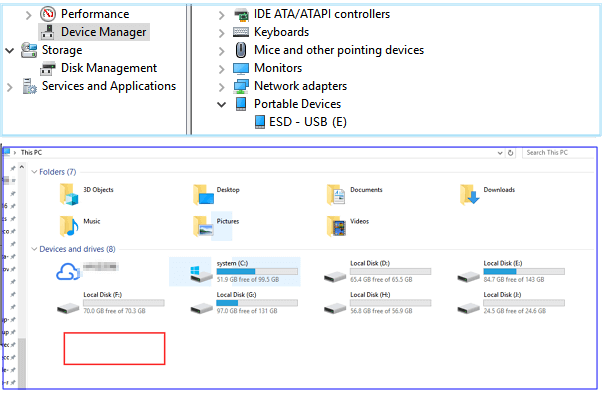
Notice: If you have important data saved on your external hard drive or USB drive, do remember to check whether your saved data are available. If not, please use a professional files recovery tool to access and restore data from a USB or external hard drive after it shows up in Disk Management.
You May Also Interest In: How to Fix Hard Drive Not Showing Up in Windows
Preparation. Check if USB/external hard drive detectable
When your USB storage drive is not showing up in My Computer (Windows 7), This PC (Windows 8.1/10), or File Explorer, you should first make them detectable in Disk Management. And below tips will help you make it:
Step 1. First, insert and connect the USB or external hard drive to your PC.
Step 2. Check if it appears in Disk Management or not.
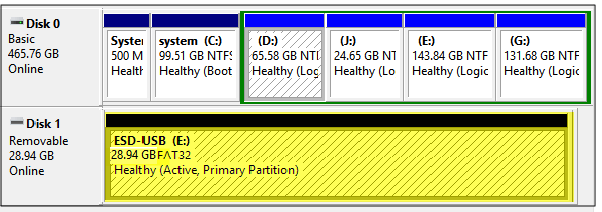
If not, try the below tips for help:
#1. Press Win + X keys at the same time and select Disk Management > Check out if you can see your USB or external hard drive listed as a Removable disk.
#2. Plug and insert your USB or external hard drive into a different USB port on your computer instead of using USB hubs.
#3. Power on your USB or external hard drive if it's switched off and try to connect it to a different computer.
When the USB or external hard drive appears in the Disk Management, you can first use a data recovery program to restore your files, and then take effective methods to fix the 'USB/external hard drive not show up in This PC' error.
Procedure 1. Access and extract data on USB/external hard drive
As long as your USB flash drive or external hard disk displays in the Disk Management, you can use EaseUS Data Recovery Wizard to access, extract and restore all data out of the device in advance.
EaseUS Flash Drive Recovery Software
You can download and run EaseUS Data Recovery Wizard whenever you have data recovery problems. It can restore data from any device, including recover emptied Recycle Bin, formatted hard drive, lost partition, NAS, and more.
Step-by-Step Guide:
Step 1. Choose and scan the external hard drive
- Download and install EaseUS Data Recovery on your PC or laptop.
- Connect the external hard drive to your computer.
- Run EaseUS Data Recovery Wizard and choose the external drive from External drives list. Then, click "Search for Lost Data".
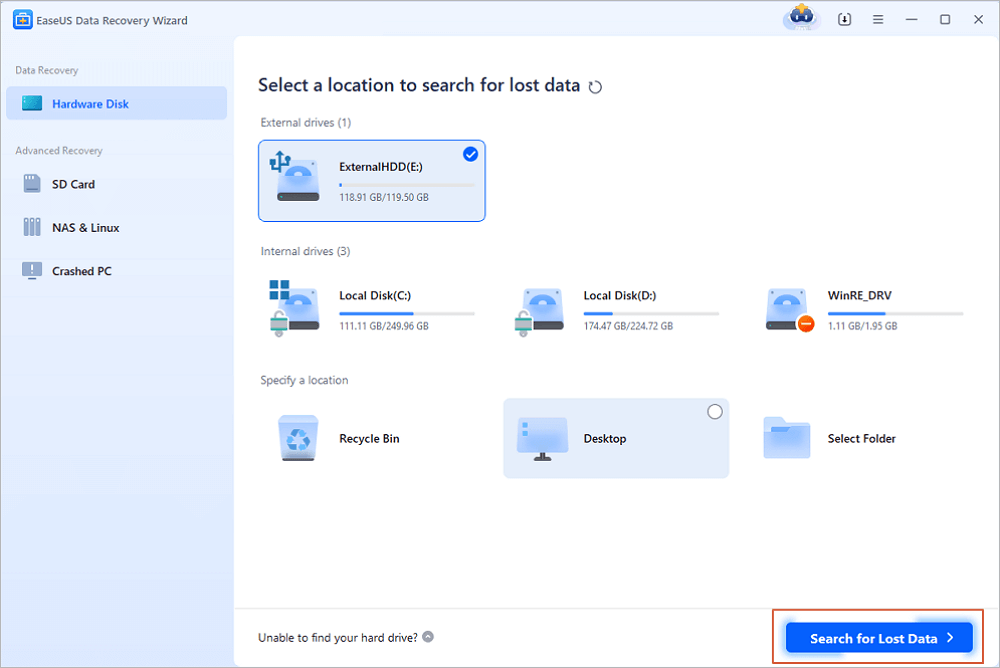
Step 2. Check the scan results
- EaseUS data recovery software will immediately scan the selected drive for all data, including deleted, corrupted, and existing data.
- You can use the Filter feature to quickly locate the files of one kind, such as Pictures, Word, Excel, PDF, videos, emails, etc.
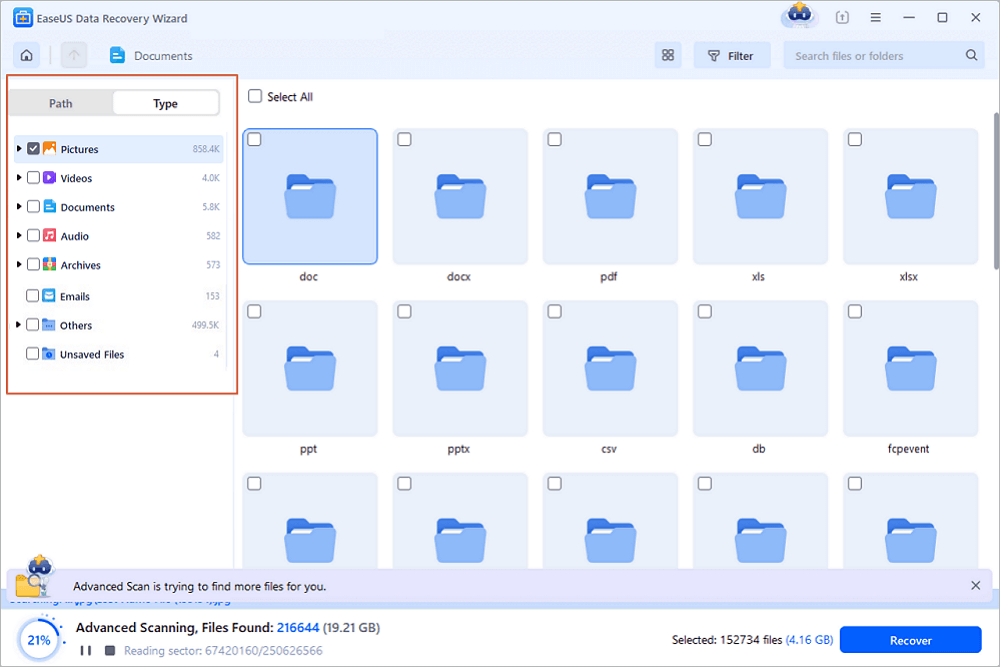
Step 3. Preview and recover data
- Double-clicking a file from the scanned results to preview.
- Choose the files you want and click "Recover".
- Select a different drive to save the recovered files instead of the original one.
💡Tip: You can restore data on the local disks, external hard drives, and also the cloud storage.
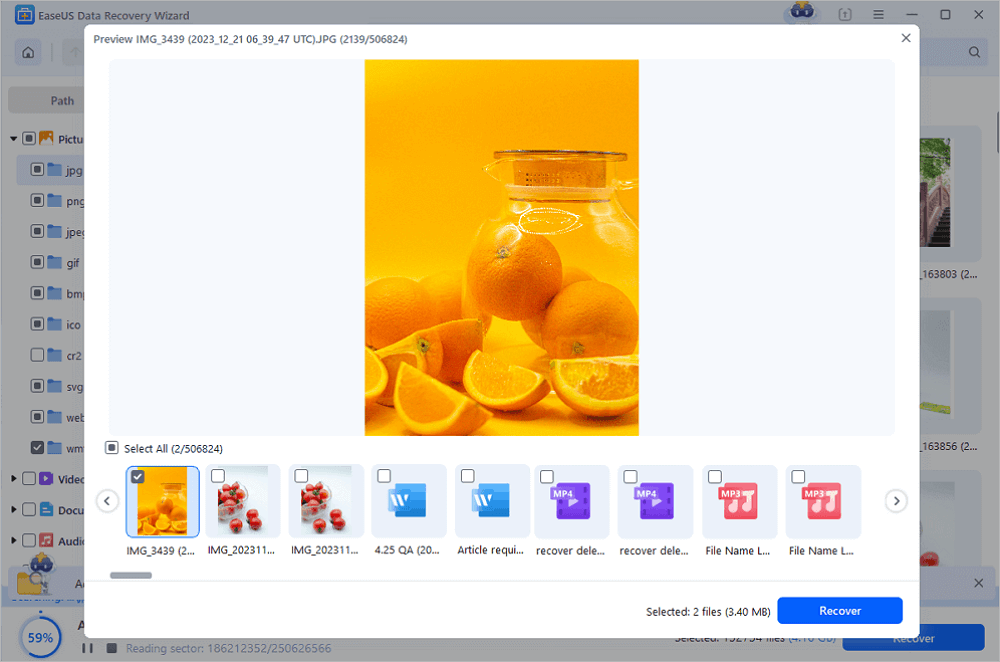
This software supports you to restore data and repair undetectable flash drives or disks with simple clicks.
Video Guide to Restore Data from USB/External Hard Drive
Procedure 2. Fix 'USB/External hard drive showing in Device Manager only'
If your USB or external hard drive does not show up in Explorer on your PC, you can now follow the three fixes below to resolve this error now:
Method 1. Turn to USB/external hard drive repair service
The most effective way to fix the "USB shows up in Device Manager but not in This PC" error is to use the hard drive repair service - EaseUS Data Recovery Services. With experts' help, you can easily repair corrupted USB/external hard drives.
Consult with EaseUS data recovery experts for one-on-one manual recovery service. We could offer the following services after a FREE diagnosis
- Repair corrupted RAID structure, unbootable Windows OS, and corrupted virtual disk file
- Recover/repair lost partition and re-partitioned drive
- Unformat hard drive and repair raw drive(Bitlocker encrypted drive)
- Fix disks that become GPT-protected partitions
Method 2. Update or reinstall USB/external hard drive drivers
Step 1. Connect your USB or external hard drive to your PC, and go to Devices Manager > Click Universal Serial Bus Controllers.
Step 2. Right-click your USB or external hard drive and click Uninstall > Unplug the drive.
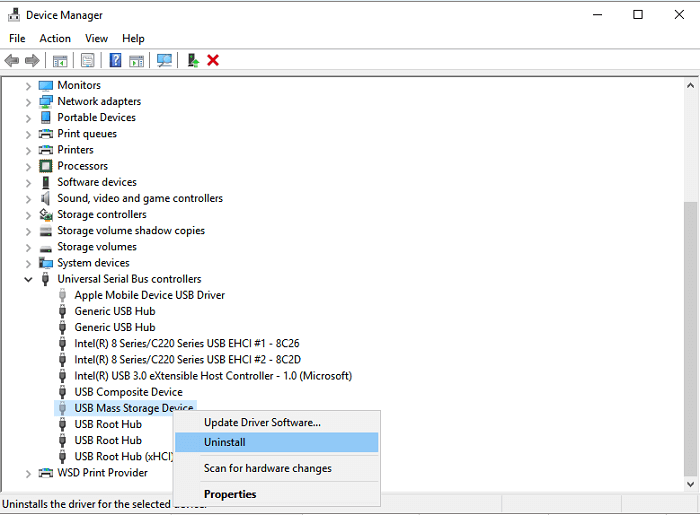
Step 3. Plug the USB/external hard drive back in your PC, and enter Device Manager again > Go to Universal Serial Bus Controllers.
Step 4. Click to highlight and select the USB component to be updated.
Step 5. Right-click USB and choose "Update Driver Software" from the drop-down menu.
Step 6. Follow the on-screen guide in Update Driver Software Wizard to update USB or external hard drive drivers.
Method 3. Assign external hard drive with a new drive letter
Step 1. Press Win + X keys and click Disk Management.
Step 2. Find and right-click on your USB or external hard drive and select Change Drive Letter and Path.
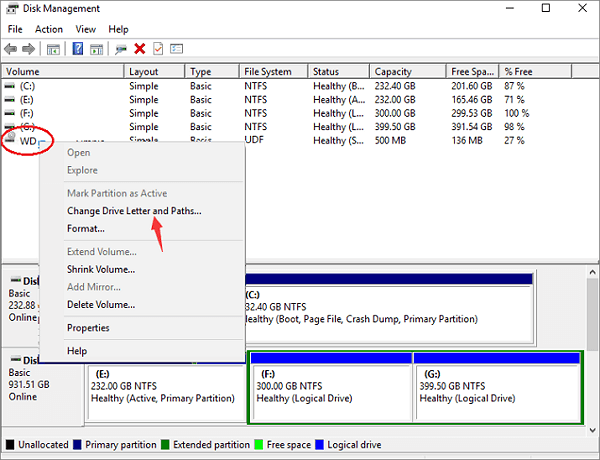
Step 3. Click Add if the drive doesn't have a letter or assign a new letter to your drive, select a new drive letter and click OK to save all the changes.
Method 4. Format or create a new volume on a USB/external hard drive
After this, you can then format and reset the file system on your USB or external hard drive to NTFS with the tips below:
Notice: This method may erase or remove the existing data on your storage device, so please make sure that you've extracted your precious data to a secure device. If not, use EaseUS EaseUS Data Recovery Wizard to restore your data in advance.
Step 1. Right-click Start and select Disk Management.
Step 2. Locate and find your USB or external hard drive, right-click on it and select Format volume.
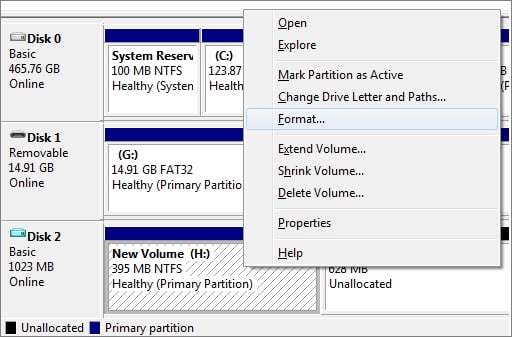
Step 3. Reset the file system from FAT or RAW to NTFS, click OK to confirm, and keep all changes.
If the USB or external hard drive shows up as unallocated space on Windows 10, you can create a new volume on the disk to make it usable for saving data again:
Step 1. Press Win + X keys at the same time and select Disk Management.
Step 2. Find and right-click the unallocated space on your USB or external hard drive and select New Simple Volume.
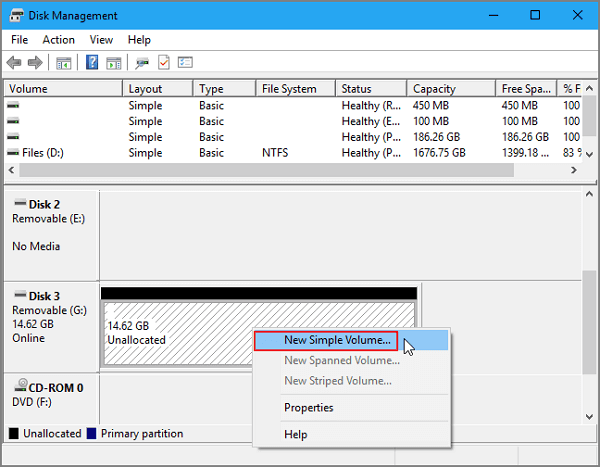
Step 3. Recreate and set the drive file system with a new drive letter to make it detectable in This PC/Windows Explorer again.
The Bottom Line
Hope you have solved your problem after reading this post. The whole procedure to solve USB showing in Device Manager only error is to check if your USB or external hard drive is detectable in Disk Management first. Then use any of the three methods we provide to solve this problem. At last, recover your USB data with EaseUS Data Recovery Wizard. If you have any questions, feel free to contact our support team - [email protected].
USB Shows Up in Device Manager but Not in This PC FAQs
You will learn more about the "USB shows up in Device Manager but not in this PC" error in this part.
How to fix the USB not showing up in Windows 10?
If the USB not showing up Windows 10 error appear. You have plenty of methods to fix this issue:
- 1. Seek USB flash drive repair service.
- 2. You can update the USB drive driver.
- 3. Reinstall the disk driver for the USB flash drive.
- 4. Create new partitions on your computer.
Why is my USB not showing up on my computer?
Many reasons can cause USB not to show up on your computer.
- 1. The USB is not plugged into the USB port stably.
- 2. Some USBs have a power button, and you didn't turn it on.
- 3. You are using a broken USB drive.
- 4. The USB port on the computer is broken.
How to recover lost data from a USB drive?
You can recover lost data from a USB flash drive with EaseUS Data Recovery Wizard.
- 1. Launch EaseUS Data Recovery Wizard, and plug in the USB drive.
- 2. Scan for lost or deleted files on the USB drive.
- 3. Preview and recover lost files.
Was this page helpful?
-
Cedric Grantham is a senior editor and data recovery specialist of EaseUS. He mainly writes articles and how-to tips about data recovery on PC and Mac. He has handled 10,000+ data recovery cases and is good at data recovery of NTFS, FAT (FAT32 and ExFAT) file systems, and RAID structure reorganization. …
-
Tracy became a member of the EaseUS content team in 2013. Being a technical writer for over 10 years, she is enthusiastic about sharing tips to assist readers in resolving complex issues in disk management, file transfer, PC & Mac performance optimization, etc., like an expert.…

20+
Years of experience

160+
Countries and regions

72 Million+
Downloads

4.9 +
Trustpilot Score


Free Data
Recovery Software
Recover data up to 2GB for free!

